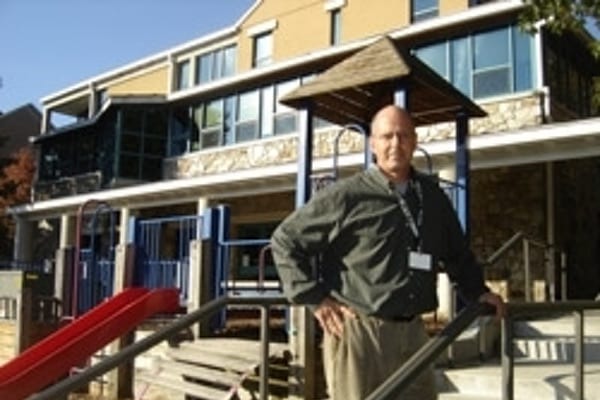Baltimore’s Bryn Mawr School Values Wireless Synchronized Time Simplicity
The Bryn Mawr School sits on 26 tree-lined acres in Baltimore, Maryland. The campus consists of educational buildings for 720 girls pre K-12. The school was founded in 1885, and its original building was located behind a Quaker Meeting House on Eutaw Street.
Before moving to the Melrose Avenue campus in the mid 1920s, the school was located in the 1200 block of Cathedral Street on the site where the Meyerhoff Symphony Hall is today. This year, Bryn Mawr is celebrating its 125th Anniversary as a leading girls’ college-preparatory school.
The school added a wired synchronized clock system as part of a new building project in 2006. Up until that point, inconsistent time on the battery clocks caused issues with class dismissal and the clocks required periodic maintenance, primarily due to Daylight Saving Time.
When a renovation project came up in 2009, project manager Matt Mitchell researched his options for synchronized time for the K-4 building. “Synchronized time is important to our daily operations. In the new building, the teachers and students transition smoothly from class to class and building to building. And the operations department benefits because man hours aren’t needed to change batteries and re-set the clocks at Daylight Saving Time.”
During the design planning process, Mitchell researched wireless clock systems on the Internet to explore all of the timekeeping options. “The reason I chose wireless was the simplicity and reduced cost of installation. The wireless clocks run on batteries so I didn’t have to plan in the cost of labor to wire the clocks. For a little bit extra money, we specified the clocks with a battery booster pack so maintenance wouldn’t have to change batteries for up to 5 years. To me, that decision was a no brainer.”
Mitchell installed and programmed the test kit in about 15 minutes using the quick start guides. “I walked the campus with the signal indicator to check the transmission signal. I had one tricky spot in a basement with thick concrete. When I moved the signal controller closer to that area, the signal worked fine.”
The Bryn Mawr School started with a 10-watt system controller and 30 clocks in their newly renovated building with plans to expand to other areas over time. “We don’t think of projects in isolation. We plan campus-wide for 5 and 10 years down the road. The initial installation was easy and the flexibility of locating the wireless clocks made the purchase decision easy.” Bryn Mawr is also considering wiring the existing bell system to the wireless clock system for synchronized audible class changes and dismissal.
Mitchell found the robust SiteSync IQ wireless clock system by American Time & Signal solved his timekeeping issues now and in the future. The user-friendly website explained what the system could do and the regional sales rep answered questions based on a description of Bryn Mawr’s exact needs. “When I called American Time, there was no pressure to purchase. It was clear Rosie wanted to provide a solution that would work and she didn’t try to sell us something we didn’t need.”
